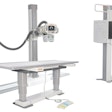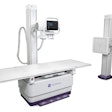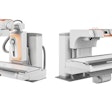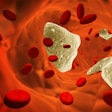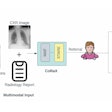Radiography has been one of the last modalities to go digital, despite the fact -- or perhaps because of the fact -- that it's the bread and butter of medical imaging. But interest in digital x-ray, both computed radiography (CR) and digital radiography (DR), is at a peak, and an increasing number of facilities are beginning to recognize its value as a necessary way of digitizing the x-ray department.

But most facilities find that some kinks, both logistical and clinical, still need to be worked out. At this year's RSNA meeting in Chicago, digital x-ray vendors will address these digital "knots" in an effort to make the transition for facilities easier and patient care more effective.
On everyone's mind is radiation dose, specifically dose creep: since higher-than-appropriate exposures in CR produce better-quality images, radiologic technologists sometimes use higher exposures to improve image quality, resulting in higher dose levels after adopting digital x-ray.
A number of studies this year have addressed the radiation dose issue: Italian researchers found that DR delivers lower radiation dose to patients than either conventional x-ray or CR (British Journal of Radiology, November 2006), while Australian clinicians found that the radiation dose delivered in CR exams could be cut in half by adjusting the manufacturers' recommended range for exposure indices by as little as 10% (British Journal of Radiology, January 2007). Look for built-in features manufacturers are adding to both CR and DR units to reduce radiation dose for patients.
One key emphasis at this year's RSNA meeting will be on flexibility in digital x-ray, whether it's compact, portable units that can perform multiple functions or remote radiography/fluoroscopy systems. Automatic positioning features will be highlighted at the meeting as well.
Finally, the past year has brought exciting new developments in the ability of CR and DR to support imaging techniques and technologies that analog x-ray can't. Look for digital x-ray tomosynthesis, computer-aided detection (CAD) for lung nodules in chest studies, and portable DR systems, as well as new types of CR technologies that add versatility to this mature modality.
Disclosure notice: AuntMinnie.com is owned by IMV, Ltd.










